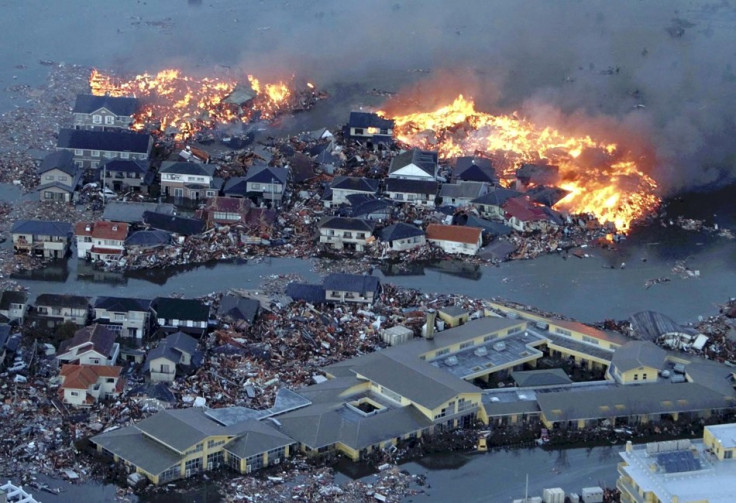'Megathrust' Earthquakes along Pacific Ring of Fire Predicted by Scientists

Megathrust earthquakes are likely to take place along the Ring of Fire in the basin of the Pacific Ocean, experts have said.
Earthquakes measuring above magnitude 9 on the Richter scale can be produced by most subduction zones - where one tectonic plate moves under another - along the Ring of Fire, the researchers found.
The research, published online by the Bulletin of the Seismological Society of America, looked to calculate the "probable maximum earthquake magnitude within a time period of interest". They looked at the likelihood over various time periods, including 250, 500 and 10,000 years.
Findings showed that most of the subduction zones were capable of generating earthquakes above M8.5 during a 250 year period, M8.8 in 500 years and M9 in 10,000 years.
Yufang Rong, a seismologist at the Centre for Property Risk Solutions of FM Global, a commercial and industrial property insurer, said: "The most interesting question for us was what was going to be the biggest magnitude earthquake over a given period of time?"
"Can we know the exact, absolute maximum magnitude? The answer is no, however, we developed a simple methodology to estimate the probable largest magnitude within a specific time frame.
"[However] just because a subduction zone hasn't produced a magnitude 8.8 in 499 years, that doesn't mean one will happen next year. We are talking about probabilities."

Researchers also noted that while some subduction zones have had big events in recent history, some – including the Cascadia subduction zone, which stretches from northern Vancouver Island to northern California – have not.
Rong told IBTimes UK that their findings indicate that "given a long enough waiting time", most subduction zones are capable of producing earthquakes of M9 or above: "The reason that we haven't seen such size earthquakes along some of the subduction zones is that our historical earthquake record is too short."
Discussing the risk of the Cascadia subduction zone, she added: "The concern is not based on the current quietness of the Cascadia subduction zone, but on the turbidite study of past earthquakes. The average occurrence time of M9 earthquakes along the Cascadia subduction zone is about 500 years based on the 10,000-year turbidite study, but the occurrence of such earthquakes did not follow a simple periodic model.
"During the 10,000-year history, the subduction zone had some long quiet times (without a M9 earthquake within ~ 1000 years), and some busy times (five M9 earthquakes within ~1500 years). It is hard to say when the next large earthquake will hit the subduction zone. Nevertheless, we should be prepared for it at any time."
Over the last 100 years, there have been five earthquakes that measured above M9, including the 2011 Tohoku earthquake that devastated parts of Japan.
Explaining how scientists predict earthquakes, Rong said: "Earthquake scientists define prediction to mean giving the time, location, and magnitude of a future earthquake within narrow windows. We still cannot accurately predict earthquakes in this way.
"However, we can forecast the long-term probability of earthquake occurrence."
© Copyright IBTimes 2025. All rights reserved.






















